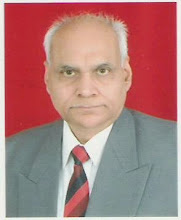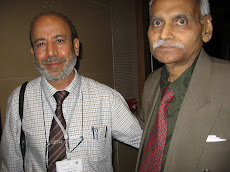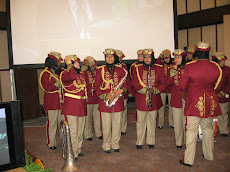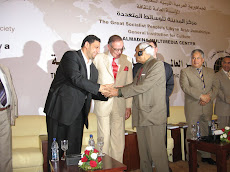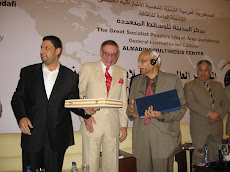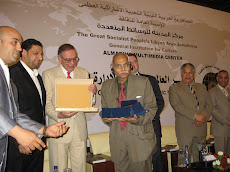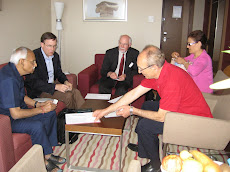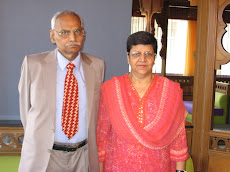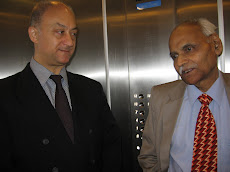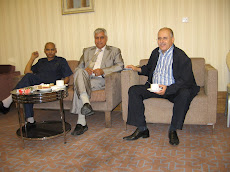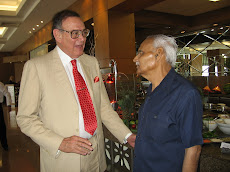
Korea, as is widely known, is strong in IT infrastructure but is it also strong in e-government? This is the central question which the author, Dr Kuk-Hwan Jeong, who was directly involved in e-government development in Korea in its crucial phase of years 2000-2005 has raised. Dr Jeong, currently Senior Research fellow at the Korea Information Society Development Institute (KISDI), a government-funded IT think tank set up in 1985, was “responsible for vision, strategy, direction, and oversight for e-government” as Director General of Ministry of Government Administration and Home Affairs (MOGHA) and later Assistant Minister in charge e-government issues (2000-2005). He joined KISDI in 2005.
The experience of Korea is, according to the author, of interest in case studies of implementing e-government not only because it is among the group successfully diffusing Internet infrastructure preparing the base for e-government, but because the challenges it faces may be of relevance to other newly informatizing countries (p-15).(emphasis original). Korea’s remarkable success in Broadband Internet adoption, which is among top ten in 2007 at 27.4% (Check InternetWorldStats Broadband Internet Subscribers - World Top 20 Countries), has drawn worldwide attention.
The book consists of seven chapters, a write-up on Korean government in brief describing its structure, an introduction, an appendix and references.
In Chapter 1: Information Revolution and E-government, the author deals with topics like IT revolution and the evolution of information society, deployment of IT revolution, speed of IT revolution and e-government, and IT efforts towards e-government in Korea. He rightly observes “The history of computer invention and commercialization goes back to the early 1950s but it did not impact the everyday life of individuals until early 1980s with the spread of personal computers.” (p-10). Noting that “The eye of IT revolution typhoon is the Internet” (p-11), he admits that predictions of “paperless office” and “cashless economy” have failed to materialize.
In Chapter 2: Backgrounds of Advanced IT Infrastructure, the author describes motivations of IT efforts, notes Internet growth, and describes citizen expectations. The objective of the national computerization project of the late 1980s was, says the author, to take advantage of IT to improve competitiveness in the world market. This again was based on the premise that Korea had missed the industrialization bus in the first half of 20th century and it would be disaster to miss the IT bus now. As a result “IT applications were placed at the centre of national attention.” This led Korea to set up world class IT infrastructure comparable to developed countries like the U.S. and Singapore.
As a result, two-thirds of Koreans had Internet connectivity by end of 2004 (p-19) which received worldwide acclaim in media (The figure stands at 66.5% in 2007).One reason for rapid growth of Internet cited by the author is the growth of ‘Net café’ or ‘PC bang’ from 100 in 1988 to more than 32,000 now. The rapid growth of PC bang industry is in part attributed to the economic crisis of 1977 when many young people lost their jobs. The other reason was government funded Internet classes for the public. Yet another reason cited are two (negative) attributes of Koreans: impatience and love of gambling, which the author finds positive as speed and risk which are required by the changing needs of society in information age.
Every technology creates hype, more powerful the technology, greater the hype. The Internet was the most powerful technology in the last decade of the 20th century. As such this created greatest hype. This raised people’s expectations to unrealistic levels not only in e-commerce, where it was already registering some brilliant successes (Yahoo!, Amazon, eBay, Google, etc.) but also in e-government which was, and is, impacting on the people’s lives. Citing and illustrating Gartner's hype cycles, he makes an impassioned but useful plea for management of citizen expectations.
In Chapter 3: Principles of E-government, the theoretical part, the author describes challenges facing government in the Internet era, e-government as a new concept of public administration, government and technology, vision for e-government, emerging stages of e-government, information sharing and government portal. Among these topics, the last two - information sharing and government portal - are particularly noteworthy. The first relates to improvement in internal processes and the second, dependent on the first, is public service delivery. And both of them are serious challenges to e-government practitioners.
The basic idea of information sharing is, says the author, to store information once rather many times, so that citizens and businesses should not be asked by different departments for the same information (pp 41-42).(emphasis supplied). He points out, apparently based on his experience that “the failure of information sharing results from organizational egoism” (p-43). As regards government portal, the author says that “The core idea behind a governmental portal is to aggregate information and services across providing agencies and to create a single point of access to each information and service (p-51) and cites the case of United Kingdom where stand-alone portals are being phased out to converge on two portals – DirectGov and BusinessLink – as primary online entry points.
In Chapter 4: Experience of E-government Initiatives, the author describes the experience of e-government projects like National Basic Infrastructure System (NBIS) started in 1987 and Korea Information Infrastructure (KII), which laid the national optical fibre backbone network. He then describes 11 priority e-government initiatives grouped under 3 categories: I. Upgrade Government Services for Citizens and Businesses (1. Government for Citizens (G4C) System- information for more than 4,000 government services, 2. Social Insurance Integration System- integrates 4 major social insurance systems, 3. Home Tax System (HTS), and 4. Government Electronic Procurement System (GePS), II. Improve the Efficiency of Administration (5. National Finance Information Administration, 6. National Education Information System, 7. Local Government Information System, 8. Personnel Policy Support System, and III. Establish Infrastructure for E-government (9. Electronic Document System, 10. Electronic Authentication System, and 11. BPR for the Integrated Centre of Government-wide Computer Resources-government data centre). These projects were successfully completed by 2002 and the author attributes their success primarily to Presidential support and support by the National Assembly. He then brings his account up to date by describing the Roadmap to E-government (2003-2007), shifting the focus from ‘small government to modernized and reformative government.’ (p-66).
In Chapter 5: Case Studies, Dr Jeong describes a number of instructive cases. In the “Portal System for Citizen Participation,” he candidly notes that “Almost all government agencies have ambitiously opened websites as a channel for citizen participation in policy debates and online polls. But neither the take-up rate nor satisfaction of people is high at the moment.” (p-87). In the case of Information Network Village Project (IVP), which has drawn international attention, the author highlights changes and outcome in remote fishing and farming villages.
In Chapter 6, the author highlights the a number of policy issues like co-ordination and political leadership, funding mechanisms, IT investment and payoffs, and monitoring and evaluation, information resource management and enterprise architecture (EA) and security and protection of private information.
In the last Chapter 7, Future Directions of E-government, the author discusses a number of important issues like promotion of government innovation, encouragement of citizen’s engagement and participation, innovation of information resource management, protection of privacy and system safety, and acceptance of e-government service.
In conclusion, the answer to the central question posed in this book “Is Korea strong in e-government,” shows, despite substantial investment in e-government infrastructure, a number of shortcomings in e-government in Korea like acceptance of the e-government service by the public has been much lower than it should be (p-157). The central lesson which emerges from this valuable work is that investment in information infrastructure is a necessary but not a sufficient condition for the success of e-government. A move from techno-centric to citizen-centric e-government will surely help.
Dr Jeong deserves to be complimented for writing this book and make his first-hand experiences in e-government available to others. The contribution becomes all the more creditable as very few people who are directly involved in e-government care to type their experiences on a computer (or to use the corresponding 20th century expression- pick up a pen to write their experiences) for benefit of others, duly reflected in this information-packed work, which is worth reading by e-government practitioners, particularly in developing countries. © Dr D.C.Misra 2007
_____________________________________________________________________________________
**Jeong, Kuk-Hwan (2006): E-government: The Road to Innovation: Principles and Experiences in Korea, Seoul, Korea, Gil-Job-E Media, March, xii+197 pp





